Presentation
Left painful ophthalmoplegia.
Patient Data
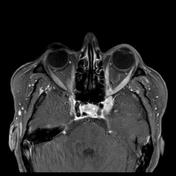

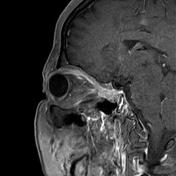

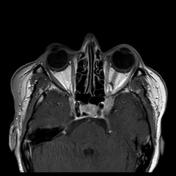

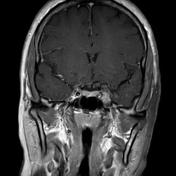

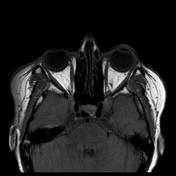

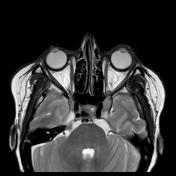

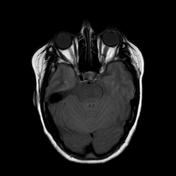

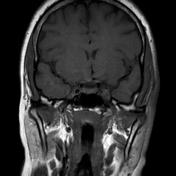

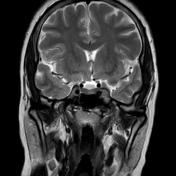

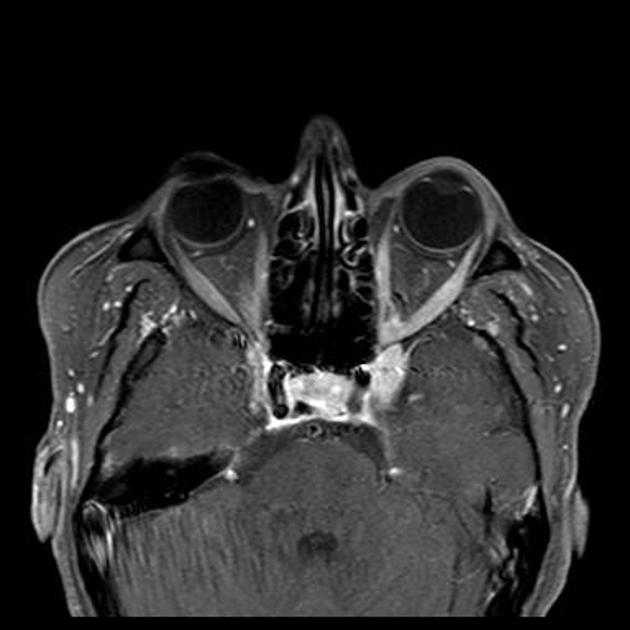
Intense homogeneously enhancing soft tissue mass lesion is seen at the left anterior cavernous sinus, orbital apex, and superior orbital fissure.
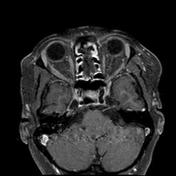

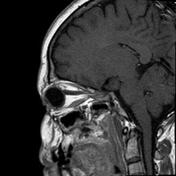

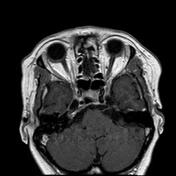

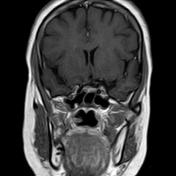

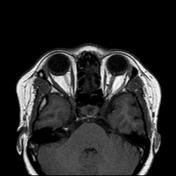

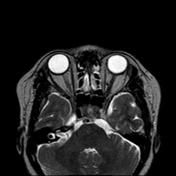

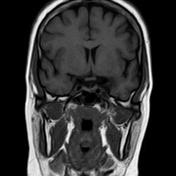

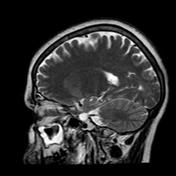

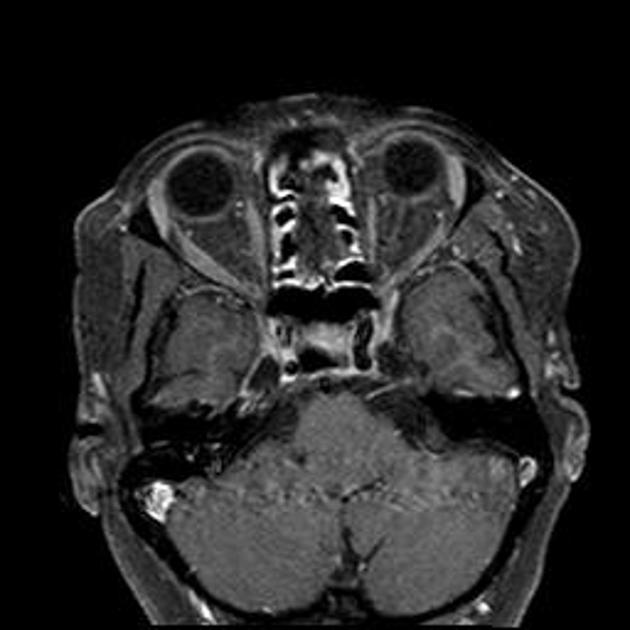
Significant size regression with near total resolution regarding the previously noted left anterior cavernous sinus, and orbital apex soft tissue mass.
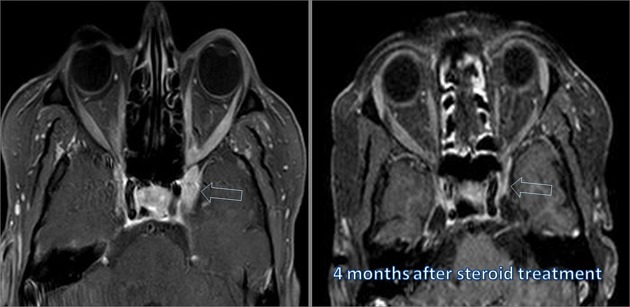
Significant size regression with near total resolution regarding the previously noted left cavernous sinus and orbital apex soft tissue mass.
Case Discussion
The second MRI exam was performed 4 months after steroid treatment, which revealed significant size regression. The diagnosis in this case is presumptive (by MRI radiological features only), no biopsy was taken.
Tolosa hunt syndrome is a non-specific inflammation of the cavernous sinus and superior orbital fissure. The histopathological features of the disease are similar to those of idiopathic orbital pseudotumor;
Clinical presentation (secondary to cavernous sinus inflammation)
recurrent retro-orbital pain
palsy of the third, fourth or sixth cranial nerves as well as the first and second divisions of the trigeminal nerve
Differential diagnosis includes other pathological processes presenting with similar clinical features like meningioma, sarcoidosis, pituitary tumors, tuberculous meningitis, and lymphoma.
The disease is characterized by immediate dramatic response to steroid therapy.
The case is courtesy of Dr Mohamed Fouad, Mohamed Ibrahim & Bahaa Al Din Mahmoud.




 Unable to process the form. Check for errors and try again.
Unable to process the form. Check for errors and try again.